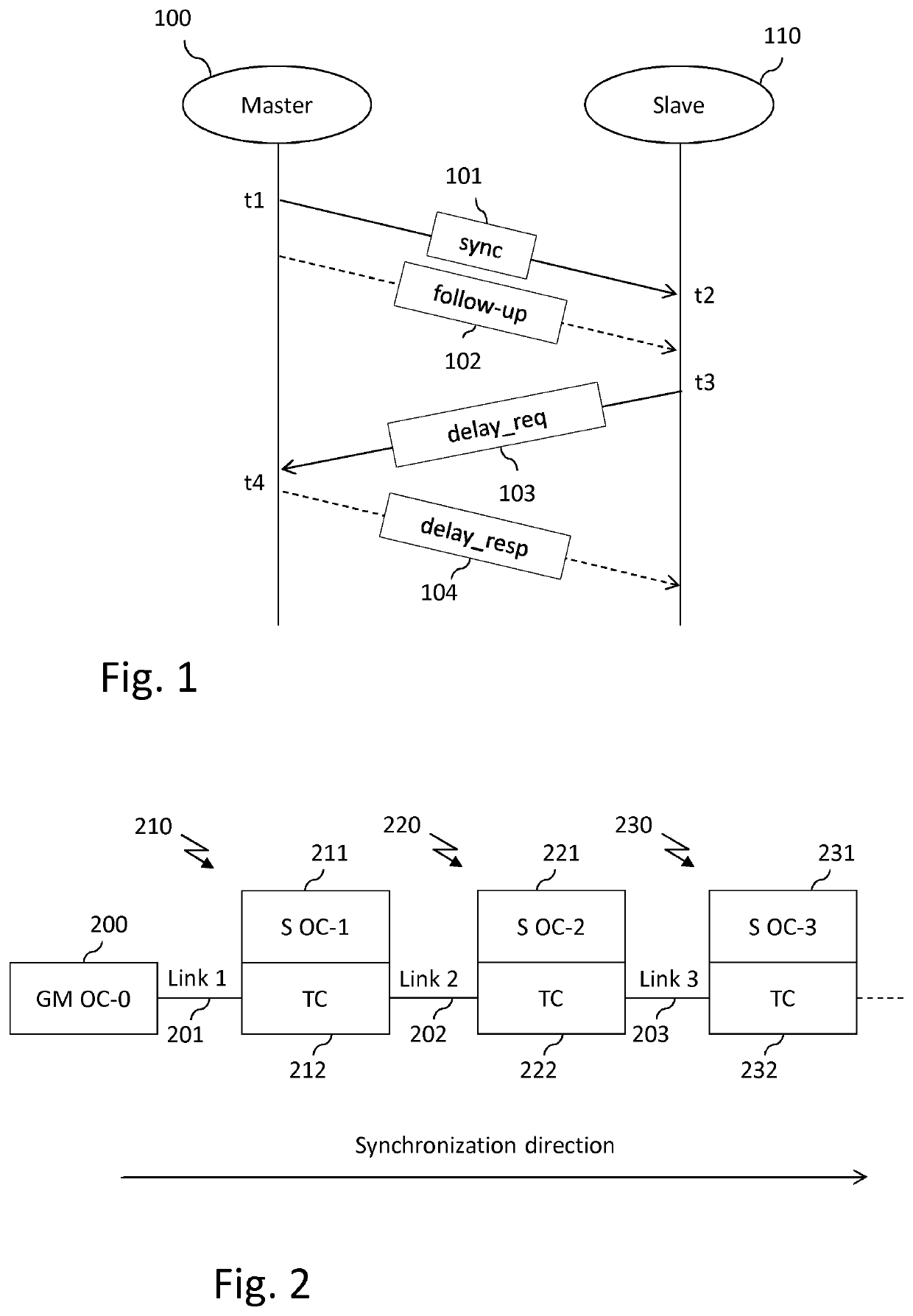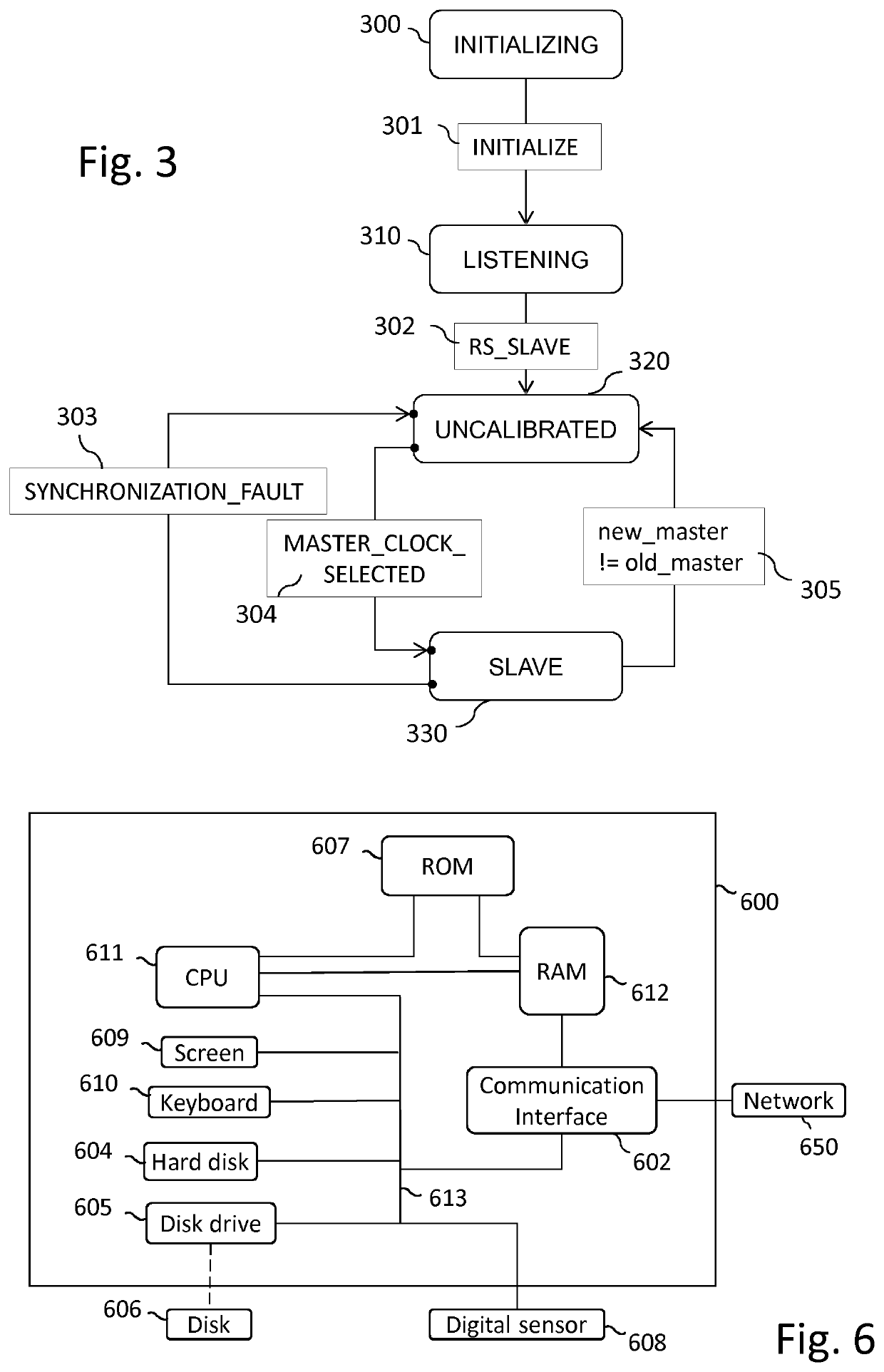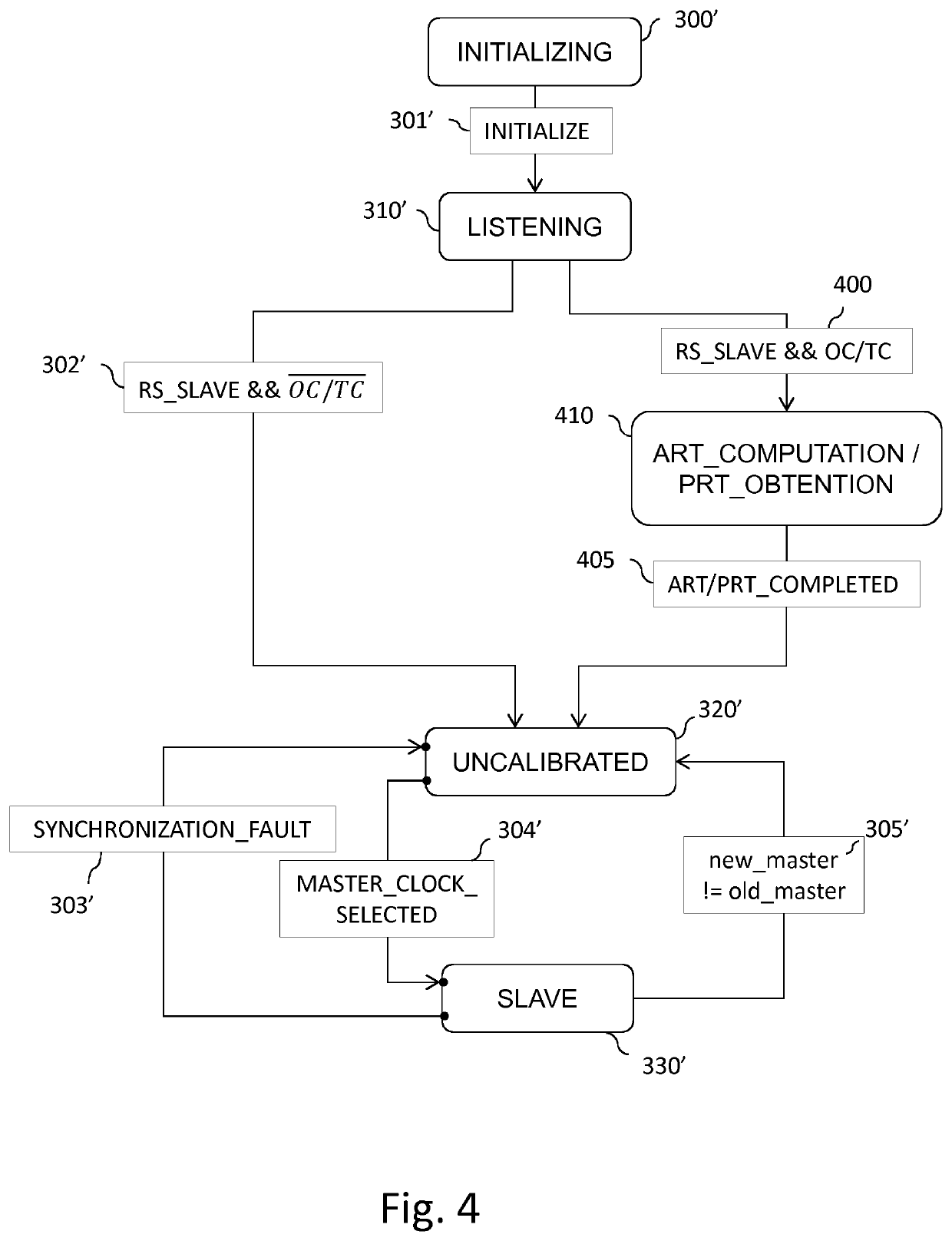Method, device, and computer program for improving synchronization of clocks in devices linked according to a daisy-chain topology
a technology of clock synchronization and daisy chain, which is applied in the direction of time-division multiplex, multiplex communication, electrical apparatus, etc., can solve the problems of master-slave synchronization suffering from unpredictable delay variation, synchronization of devices connected to the same communication network, and introduce time delay variation, so as to reduce the time duration needed for synchronizing the nodes, improve accuracy, and optimize the effect of clock synchronization
- Summary
- Abstract
- Description
- Claims
- Application Information
AI Technical Summary
Benefits of technology
Problems solved by technology
Method used
Image
Examples
Embodiment Construction
[0097]According to particular embodiments, the invention is directed to a synchronization mechanism for devices implementing a combination of a logical clock module used for synchronization purposes, for example an ordinary clock module in the broad meaning of the IEEE 1588-2008 standard, and of a time compensation clock module used for bridging purposes, for example a transparent clock module (still in the broad meaning of the IEEE 1588-2008 standard), where the logical clock module and the time compensation clock module share the same physical clock, using a theoretical residence time that may be predetermined or computed.
[0098]Still according to particular embodiments, start-up of the logical clock module synchronization is delayed so as to compute an average residence time while the physical clock is in a free running mode or is subject to an analog or a digital syntonization. The average residence time is advantageously used during synchronization of the logical clock module. N...
PUM
 Login to View More
Login to View More Abstract
Description
Claims
Application Information
 Login to View More
Login to View More - R&D
- Intellectual Property
- Life Sciences
- Materials
- Tech Scout
- Unparalleled Data Quality
- Higher Quality Content
- 60% Fewer Hallucinations
Browse by: Latest US Patents, China's latest patents, Technical Efficacy Thesaurus, Application Domain, Technology Topic, Popular Technical Reports.
© 2025 PatSnap. All rights reserved.Legal|Privacy policy|Modern Slavery Act Transparency Statement|Sitemap|About US| Contact US: help@patsnap.com



